Refrigerators are a staple appliance in every kitchen, providing a safe haven for perishable food.
It is important to keep our refrigerators clean and well-maintained, but bugs can sometimes get into them and contaminate our food and compromise hygiene, and they can also damage the fridge and its components.
This article will explore common types of bugs that can infest refrigerators, the reasons they are attracted to this environment, and most importantly, effective methods for preventing and eliminating them.
Important Note: If you're tired of pests and want a reliable solution, then you should definitely consider seeking help from a professional pest control company. DIY solutions can be effective, but if you're dealing with a significant pest infestation, you don't want to rely solely on DIY methods. Pest control companies typically don't charge huge fees. You can fill out this form to receive free quotes from the top local pest control companies, and compare the quotes and see for yourself. Then, finally, your pest problems will be eliminated for good.
Let’s dive in and learn how to keep our fridges bug-free and our food fresh!
Why Are There Little Dead Bugs in My Fridge?
Cold environments are not ideal for bugs, and the temperature inside the fridge can be too cold for them to survive.
Refrigerators typically maintain a temperature between 32 and 40 degrees Fahrenheit (0 to 4 degrees Celsius) to preserve food.
Most bugs are adapted to thrive in specific temperature ranges and environments that are conducive to their survival.
In the event that they are exposed to temperatures that are too low for an extended period of time, they may not be able to function properly or produce enough energy to sustain themselves and may die.
What Are Those Dead Bugs in the Fridge?
Finding dead bugs in the fridge can be a concerning discovery. Here are several types of bugs that may be encountered in such a situation.
Gnats
Gnats are small, flying insects that resemble tiny mosquitoes. They are attracted to fruits and vegetables and may accidentally enter the fridge while flying around the kitchen.
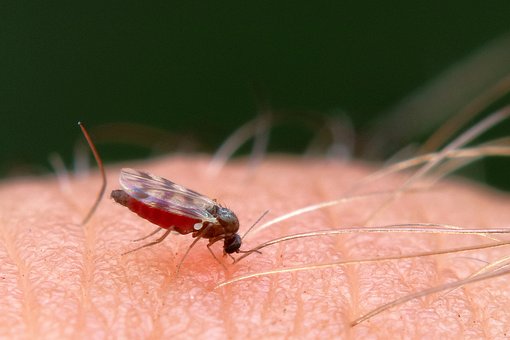
Fruit Flies
Fruit flies are small, flying insects that are often found hovering around ripe or decaying fruits and vegetables.
They can lay their eggs on fruits or vegetables in the refrigerators and the larvae may later die inside the refrigerators.

Mosquitoes
Mosquitoes are blood-feeding insects that can enter the fridge in search of a blood meal. However, the cold temperatures inside the fridge will not allow them to survive, so they may die.
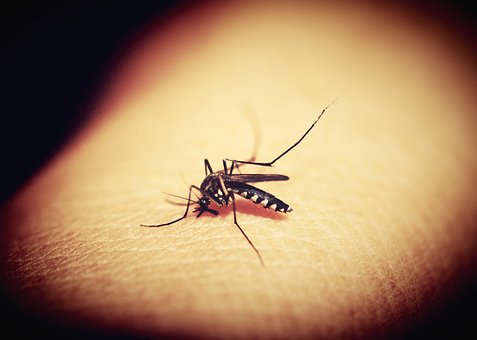
Drain Flies
Drain flies, also known as moth flies, are small flying insects that are commonly found near drains, sewage pipes, and other damp areas.
They may accidentally end up in the refrigerator while flying around and may not be able to survive the cold temperatures.
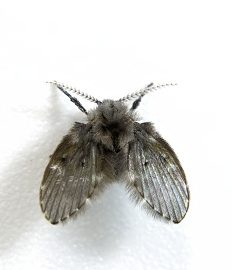
House Flies
House flies are a common type of fly that can lay their eggs on food items, garbage, or other organic matter.
The eggs or adult flies may accidentally end up in refrigerators, and the cold temperatures can lead to their death.
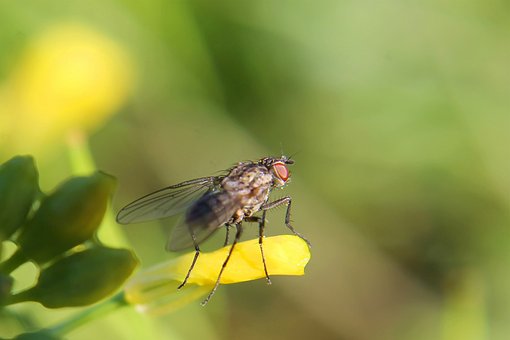
Baby Cockroaches
Cockroaches are resilient pests that can infest various areas of a home, including the kitchen and the fridge.
Baby cockroaches, also known as nymphs, may accidentally enter the fridge and die due to cold temperatures or lack of food sources.
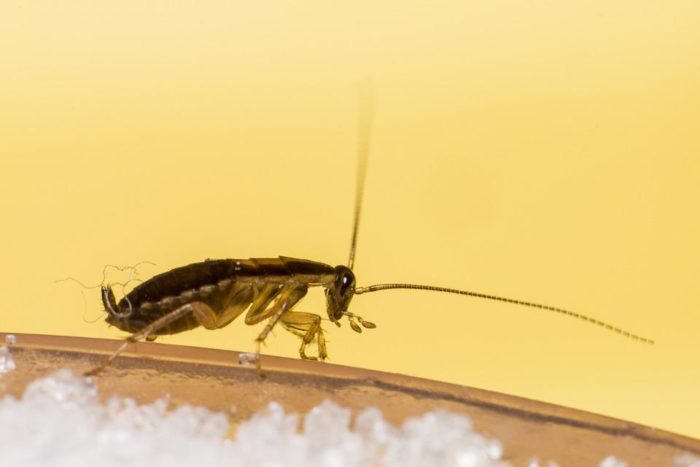
Ants
Ants are social insects that may enter the refrigerator in search of food. However, the cold temperatures inside the refrigerator can be unfavorable to their survival, and they may die as a result.
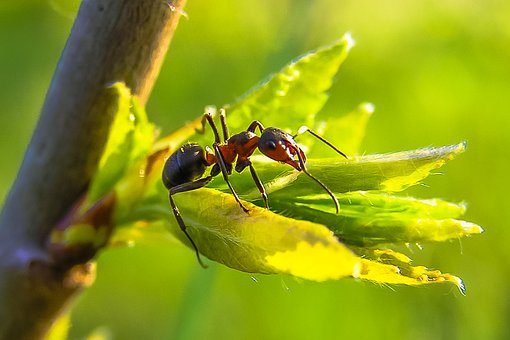
How do Tiny Bugs get Inside The Fridge?
Accidental Entry
Bugs, such as gnats, fruit flies, drain flies, and other small flying insects, can accidentally enter the fridge when they are flying around the kitchen.
They may be attracted to food items, fruits, or vegetables that are stored in the open or have ripened and inadvertently fly or crawl into the refrigerators when the door is open.
Food Contamination
Bugs can also enter the fridge by hitchhiking on food items that are brought into the fridge.
For example, fruits, vegetables, or packaged goods purchased from the store may already have bugs or their eggs on them, and when stored in the fridge, the bugs can crawl out and explore the surroundings.
Gaps or Cracks
Bugs can find their way into refrigerators through gaps, cracks, or openings in the fridge door seal, gaskets, or other parts of the refrigerator.
If the fridge is not properly sealed, bugs can squeeze through these openings and gain entry into the fridge compartments.
Dirty Drip Trays or Drains
Some bugs, such as drain flies or fruit flies, thrive in damp and dirty environments, such as clogged drip trays or drains in refrigerators.
If these areas are not cleaned regularly, bugs can breed and multiply, eventually finding their way into the main compartments of the fridge.
Open Windows or Doors
Bugs can also enter the fridge from outside if there are open windows or doors near the fridge area.
Insects like ants or cockroaches can easily crawl through small openings or gaps around windows or doors and make their way into the fridge.
Pet Food or Trash
If pet food or trash is stored near the fridge, bugs may be attracted to these food sources and find their way into the fridge through openings or gaps.
How to Get Rid of Dead & Living Bugs From Your Fridge
Dead Bugs
Clean and Disinfect
Begin by unplugging the refrigerators and taking out all food items from the affected compartments and drawers.
Use a gentle cleaner or mix of water and dish soap to clean them thoroughly, particularly in areas where the insects are like arcades, cracks, and edges of shelves. Scrub gently with a brush or cloth to remove any residue or marks.
After cleaning, rinse it off with fresh water and then use a food-safe disinfectant or solution of water and white vinegar for sanitization.
Remove Dead Bugs
Remove dead bugs from the fridge gently with a damp cloth or paper towel. Avoid using bare hands or abrasive materials that can scratch the refrigerator’s surface.
In order to prevent contamination or odor, dispose of the dead bugs in a sealed plastic bag or with paper towels before discarding them.
Use a Vacuum Cleaner
If there are a significant number of dead bugs or they are difficult to reach with a cloth or paper towel, you can use a handheld vacuum cleaner with a hose attachment to suck them up.
Make sure to clean the vacuum thoroughly afterward to prevent any cross-contamination.
Deodorize
In your refrigerators, dead bugs can leave an unpleasant odor behind. Activated charcoal or baking soda can be used as a natural deodorizer to eliminate the odor.
Simply place an open container of activated charcoal or baking soda on a shelf in your refrigerators to absorb the odor.
Prevent Reoccurrence
You should practice good food hygiene and storage habits to prevent dead bugs from accumulating in your fridge in the future.
Keep your food in sealed containers, clean up spills and crumbs promptly, and regularly inspect your fridge for any signs of bugs.
The shelves, drawers, and other surfaces of your fridge should also be cleaned and sanitized on a regular basis.
Living Bugs
Citrus Fruits
The strong citrus odor from fruits like lemon, orange, or cucumber can act as a natural deterrent for some types of bugs.
You can place slices of these fruits in the refrigerators or even squeeze their juice and wipe down the shelves and drawers with it. Citrus has a pungent scent that repels gnats, fruit flies, and ants, which keeps them out of your refrigerators.
Vinegar
It is possible to use vinegar as a natural bug repellent as well as a cleaning agent. It is recommended that you mix equal parts water and white vinegar in a spray bottle to clean the shelves, drawers, and crevices of your fridge.
The strong smell of vinegar can deter bugs and make your fridge less appealing to them.
Essential Oils
Insect-repelling properties are well-known in some essential oils. For example, peppermint oil, tea tree oil, and eucalyptus oil.
You can dilute a few drops of these essential oils in water and use them as a spray to clean your fridge or soak cotton balls in the oil and place them strategically in your fridge to repel bugs.
Baking Soda
In addition to absorbing odors and deterring bugs, baking soda is a natural and safe ingredient. Add baking soda to the shelves or drawers of your refrigerator, or mix it with water and apply it to places where bugs are common.
After the baking soda has been left on for a few hours, wipe it off with a damp cloth. Baking soda can neutralize odors and create an unfavorable environment for bugs.
Herbs and Spices
Some herbs and spices can also help repel bugs due to their strong scents. For example, bay leaves, cinnamon sticks, and dried cloves are known to have insect-repelling properties.
You can place these herbs and spices in small cloth bags or sachets and strategically position them in your refrigerators to deter bugs.
Conclusion
Finding bugs in your fridge can be a common and frustrating issue. However, by understanding how they can enter your fridge, taking preventive measures, and using effective cleaning methods, you can easily get rid of both living and dead bugs from your fridge.
Keeping your refrigerator clean and practicing good food hygiene habits will help ensure the safety and freshness of your food.
Don’t let these pesky bugs spoil your food or your appetite – take action and keep your refrigerator bug-free!

